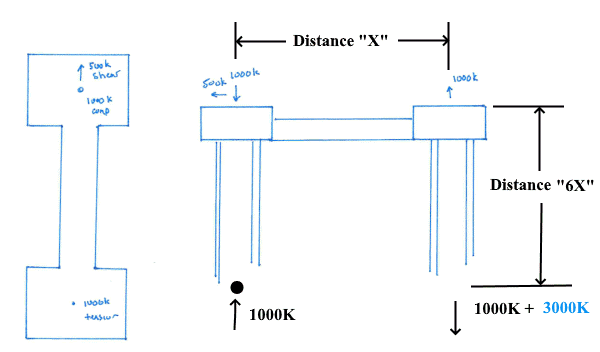Modeling a pile group with an "I" shape (group of piles at the top and bottom of the "I", tied together). I'm looking for some insight as to if the results I'm seeing "make sense." This particular scenario has 1000k compression on the top of the "I" and 1000k tension on the bottom of the "I". As you'd expect, the results are the the piles in compression end sum to about 1000k and the piles in the tension end sum to about 1000k.
But, if I apply a shear load to the top of the "I" of 500k (loads applied at the elevation of top of piles, which are buried), then I get a massive increase in the piles that are in tension, of almost 4x the scenario where there was no shear load. Sketch attached.
Can anyone suggest why the shear load add such a large amount of tension? I can't seem to recreate this tension on paper via simple sketches.
But, if I apply a shear load to the top of the "I" of 500k (loads applied at the elevation of top of piles, which are buried), then I get a massive increase in the piles that are in tension, of almost 4x the scenario where there was no shear load. Sketch attached.
Can anyone suggest why the shear load add such a large amount of tension? I can't seem to recreate this tension on paper via simple sketches.

